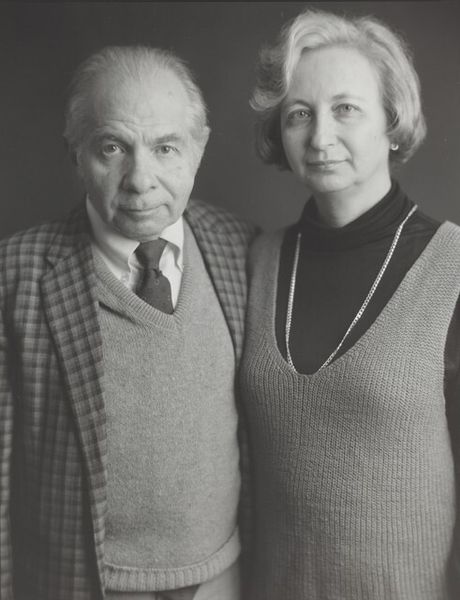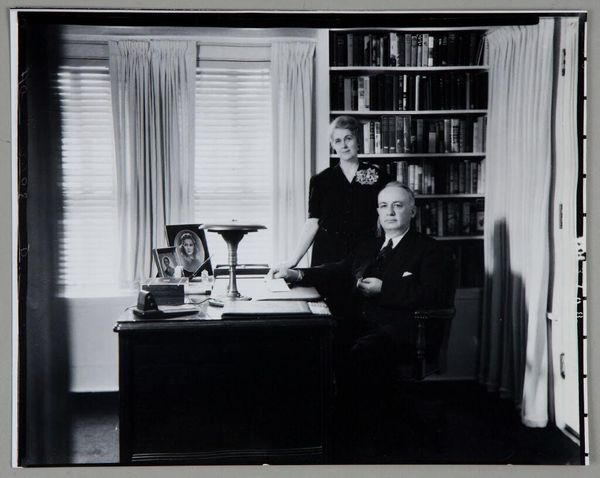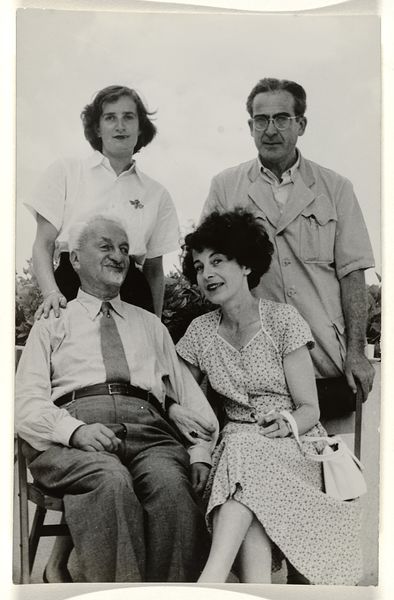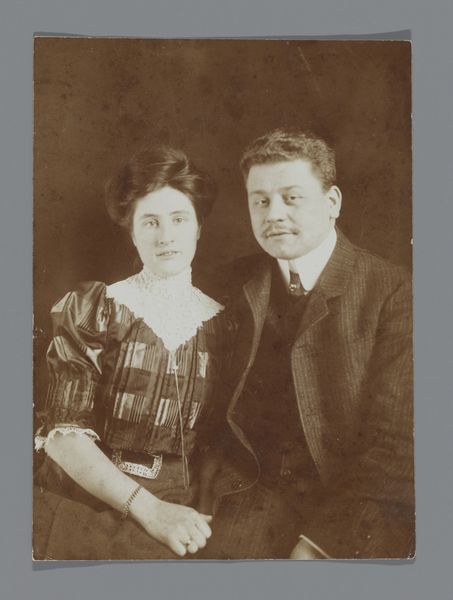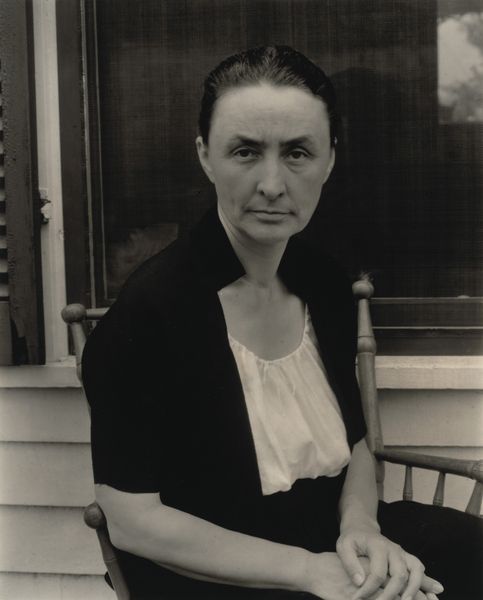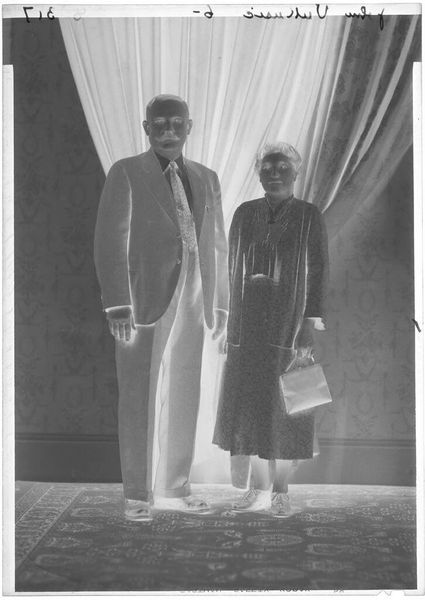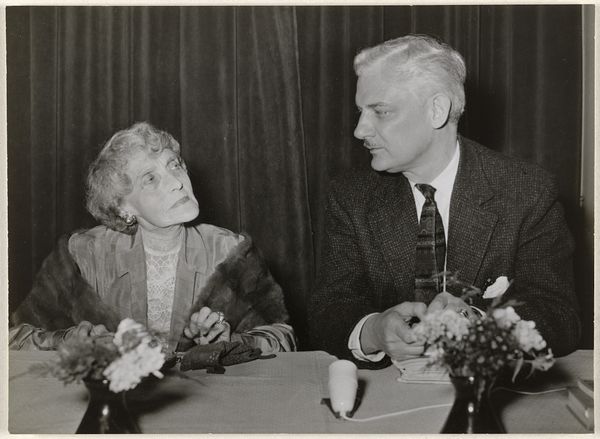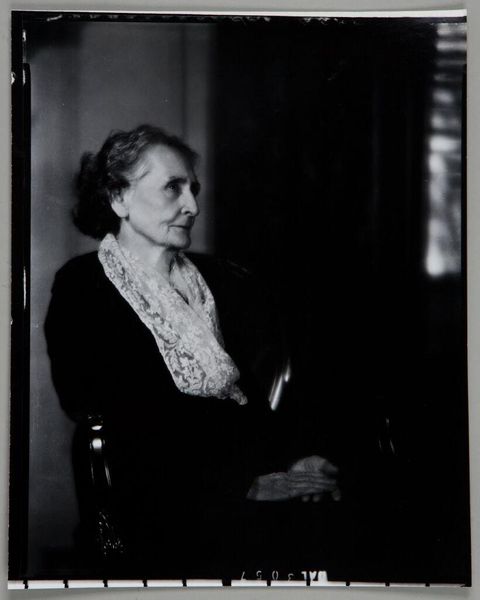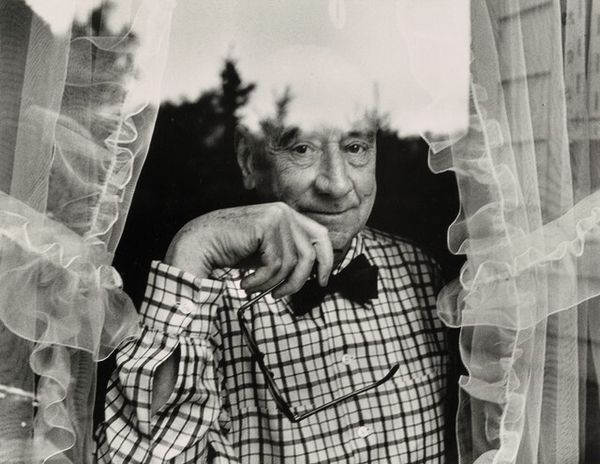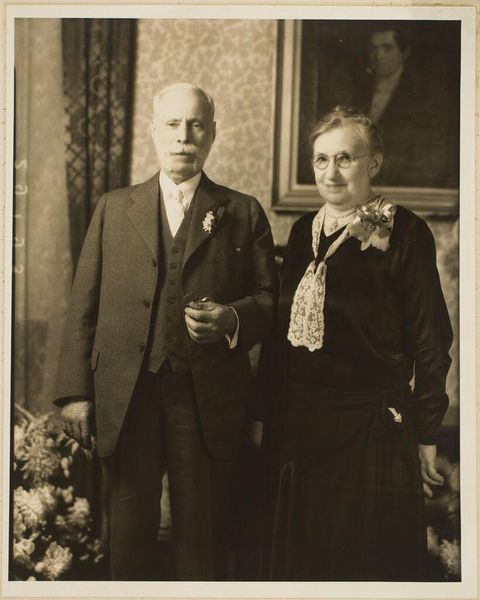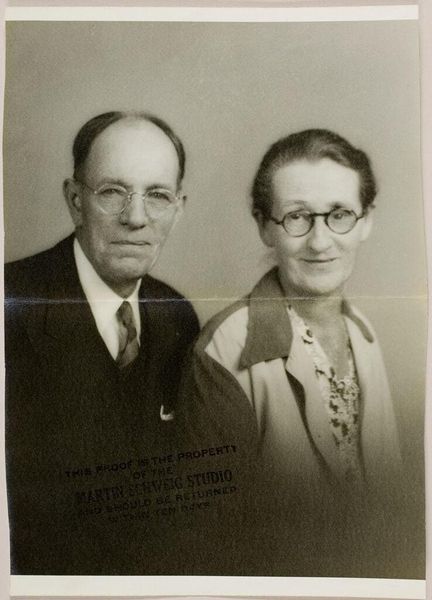
photography, gelatin-silver-print
#
portrait
#
portrait
#
figuration
#
photography
#
historical photography
#
gelatin-silver-print
Dimensions: image: 11 1/8 x 9 5/8 in. (28.3 x 24.5 cm) sheet: 35 1/2 x 28 in. (90.2 x 71.1 cm )
Copyright: National Gallery of Art: CC0 1.0
Editor: We’re looking at Mariana Cook's gelatin-silver print, "Untitled (Portrait of Dorothy and Herb)" from 1999. The texture created from the choice of photography process strikes me first. The subjects almost float within the darkness, their expressions serious yet welcoming. As you explore this piece, what underlying currents do you detect? Curator: That's a perceptive initial read. Beyond the technical mastery of the gelatin-silver print, it’s vital to think about context. Mariana Cook’s subjects, Dorothy and Herb, were actually influential figures in the art world – significant collectors who passionately supported emerging artists. Knowing that transforms this seemingly straightforward portrait into something of a social document. Editor: So, this portrait immortalizes not just people, but also their role within a larger cultural landscape? Curator: Precisely. Consider how the image circulates within museums and galleries. It’s not just a representation of two individuals; it becomes part of their ongoing legacy and influences our understanding of how art is supported and disseminated. The 'politics of imagery' aren't always overt, but this image quietly shapes narratives within the art world. It invites us to consider how collectors gain influence and, conversely, how their images contribute to how they are perceived. Do you see the weight of this embedded narrative reflected within the expressions? Editor: Now that you point that out, I see a certain resolve or pride that I initially missed. The simplicity almost camouflaged the importance. Curator: That initial unassuming quality is precisely where its power resides. By stripping away the spectacle, Cook compels us to consider the subjects' contribution. Their presence reflects broader conversations about the art world's social structure. What are your thoughts now about the public role of such an intimate portrait? Editor: Now it reads as both personal and public, almost like an understated manifesto of cultural patronage. It underlines the significance of personal choice on broader audiences. Curator: Precisely, an exercise of private individuals presented for the public sphere, a key part of historical art production and viewing. Editor: Thanks, seeing that historical layer of cultural relevance really transforms the whole viewing experience for me.
Comments
No comments
Be the first to comment and join the conversation on the ultimate creative platform.
